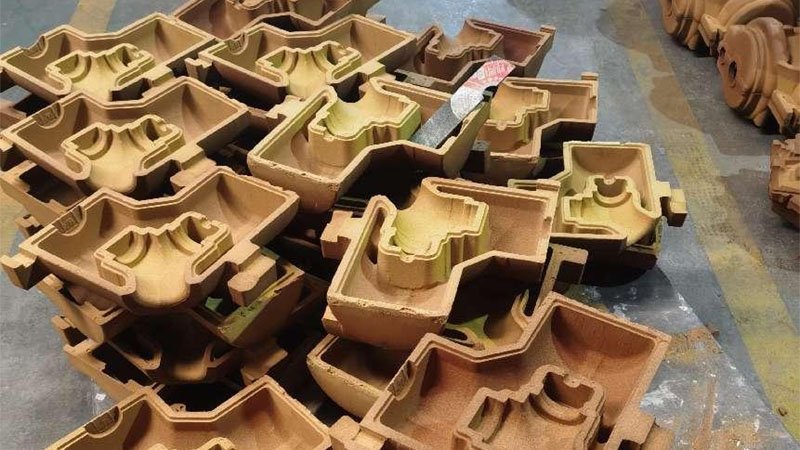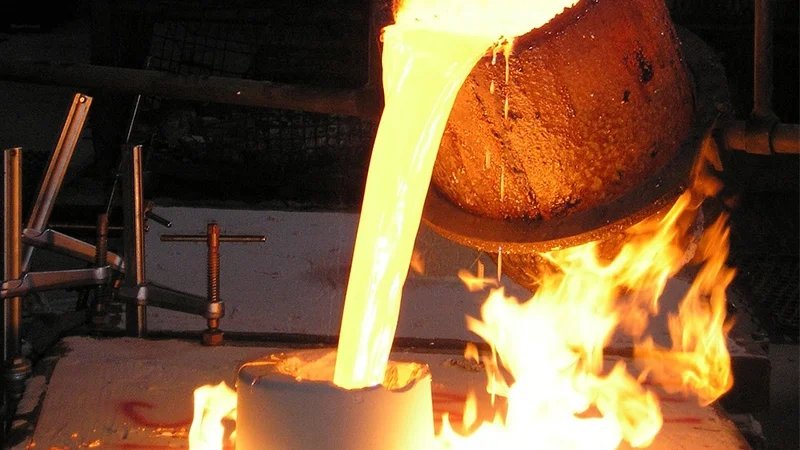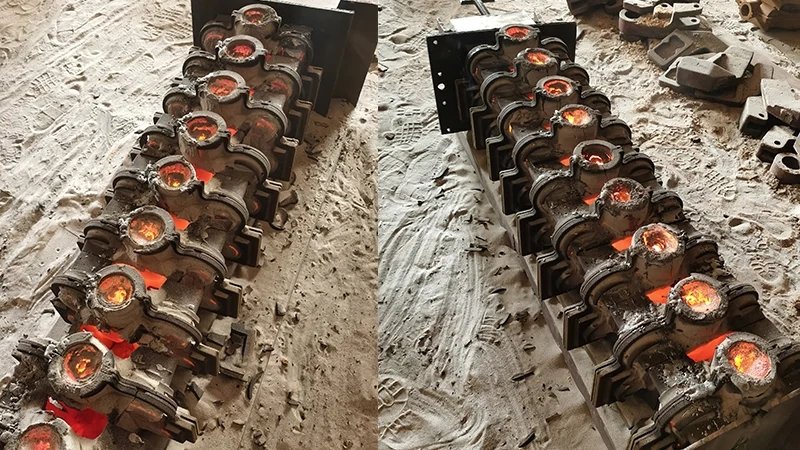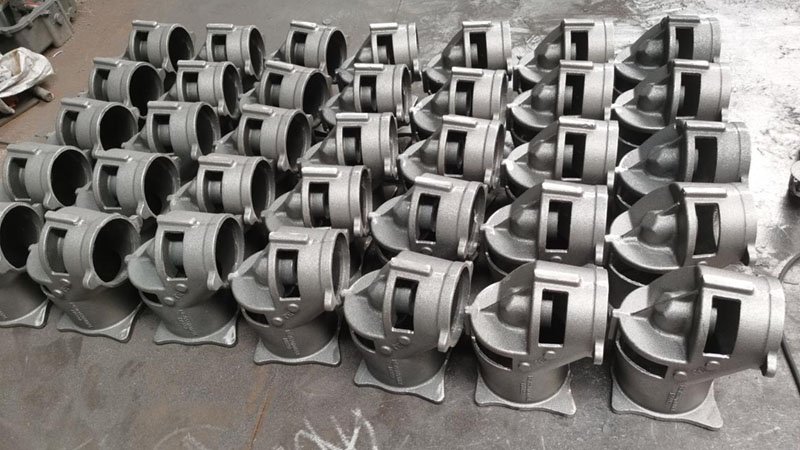SMEMACH:Austempered Ductile Iron
Shandong Province is currently China's casting sand casting manufacturers are more concentrated areas, SMEMACH professional sand casting parts has been more than 15 years of history, the basic technology has been very mature, the current use of film sand casting production of precision steel castings face a number of problems that need to be solved, such as sand sticking (scars), cold barriers, porosity, etc., how to solve these problems remain to be our further exploration and Solve these problems.
1.Features of sand casting: suitable strength performance; good fluidity, the prepared sand molds and cores have clear contours and dense structures, which can produce complex sand cores; sand molds (cores) have good surface quality and rough surface The degree can reach Ra=6.3~12.5μm, the dimensional accuracy can reach CT7~CT9 grade; the collapsibility is good, and the casting is easy to clean.
2.Scope of application: sand casting can be used to make molds and cores. The molds or cores of Sand casting can be used in conjunction with each other or with other sand molds (cores); not only can be used for metal gravity Casting or low-pressure casting can also be used for iron sand-coated casting and thermal centrifugal casting; it can be used not only for the production of cast iron and non-ferrous alloy castings, but also for the production of steel castings.
1. Composition of sand casting
It is generally composed of refractory materials, binders, curing agents, lubricants and special additives.
1) Refractories are the main body of sand casting. The requirements for refractory materials are: high refractoriness, less volatile matter, rounder particles, and firmness. Generally choose natural scrubbing silica sand. The requirements for silica sand are: high Sio2 content (cast iron and non-ferrous alloy castings are required to be greater than 90%, steel castings are required to be greater than 97%); mud content is not greater than 0.3% (for scrubbing sand)-[Water-washing sand mud content requirements Less than; particle size ①distributed on adjacent 3 to 5 sieve sizes; rounded grain shape, angular factor should not be greater than 1.3; acid consumption value is not less than 5ml.
2) Phenolic resin is generally used as the binder.
3) Urotropine is usually used as the curing agent; calcium stearate is generally used as the lubricant, which prevents the coating sand from agglomerating and increases fluidity. The main function of additives is to improve the performance of Sand casting.
4) The basic proportion of sand casting is the proportion of distribution (mass fraction, %). Note: Raw sand 100 is scrubbing sand, phenolic resin is 1.0~3.0 accounting for the weight of raw sand, and urotropine (aqueous solution 2) is 10-15 The weight of calcium stearate is 5-7 for the weight of the resin, and the weight of the additive is 0.1-0.5 for the raw sand. 1:2) 10-15 accounted for resin weight, calcium stearate 5-7 accounted for resin weight, additive 0.1-0.5 accounted for raw sand weight.

2. Production process of sand casting
The preparation process of sand casting mainly includes cold coating, warm coating, and thermal coating. At present, almost all the production of Sand casting adopts the hot coating method. The thermal coating process is to first heat the raw sand to a certain temperature, then mix and stir with the resin, urotropine aqueous solution and calcium stearate, then cool, crush and sieving.
Due to the difference in formula, the mixing process is different. At present, there are many types of Sand casting production lines in China. There are about 2,000 to 2,300 semi-automatic production lines for manual feeding, and nearly 50 computer-controlled automatic production lines have effectively improved production efficiency and product stability.
3. The main product types of sand casting
1) Ordinary sand casting Ordinary sand casting is traditional sand casting. Its composition is usually composed of quartz sand, thermoplastic phenolic resin, urotropine and calcium stearate. No additives are added, and the amount of resin added is usually It is relatively high under certain strength requirements, and does not have the characteristics of high temperature resistance, low expansion, and low gas evolution. It is suitable for the production of castings with low requirements.
2) High-strength, low-gassing type Sand casting features: high strength, low expansion, low gas evolution, slow gas evolution, anti-oxidation. Brief introduction: high-strength, low gas-generating Sand casting is an updated product of ordinary sand casting. By adding relevant characteristic "additives" and adopting new the compounding process greatly reduces the amount of resin, its strength is more than 30% higher than that of ordinary sand casting, and the gas generation volume is significantly reduced, and can delay the gas generation speed, which can better meet the needs of casting production.
This kind of sand casting is mainly used in the production of iron castings, small and medium steel castings and alloy steel castings. At present, there are three series of this kind of sand casting: GD-1 high-strength low-gassing Sand casting; GD-2 high-strength, low-expansion, low-gassing Sand casting; GD-3 high-strength, low-expansion, low-gassing and anti-oxidation coating.
3) High temperature resistant (type) sand casting (ND type) features: high temperature resistance, high strength, low expansion, low gas generation, slow gas generation, easy to collapse, anti-oxidation Introduction: high temperature resistant sand casting is produced through a special process formula technology with excellent high temperature performance (high strength at high temperature, A new type of sand casting with long heat resistance time, small thermal expansion, low gas evolution) and comprehensive casting performance.
This type of Sand casting is particularly suitable for the production of complex thin-walled precision cast iron parts (such as automobile engine cylinder blocks, cylinder heads, etc.) and high-demand steel castings (such as container corners and train brakes; middle shell parts, etc.) , Can effectively eliminate casting defects such as sand sticking, deformation, hot cracking and pores. At present, the sand casting has four series: VND-1 high temperature resistant sand casting. ND-2 high temperature resistant, low expansion and low gas generation sand casting ND-3 high temperature resistant, low expansion, low gas generation and oxidation resistant sand casting ND-4 High temperature resistant, high strength bottom, low expansion and low outgassing film
4) Easily collapsible sand casting has good strength and excellent low-temperature collapsibility performance, which is suitable for the production of non-ferrous metal castings.
5) Other special requirements sand casting In order to meet the needs of different products, a series of special sand castings have been developed, such as: sand casting for centrifugal casting, chilled sand casting, wet sand casting, anti-sticking sand, and Veining, anti-orange peel sand casting, etc.

The heating temperature is 200-300℃, the curing time is 30-150s, and the sand shooting pressure is 0.15-0.60MPa. The sand core with simple shape and the sand casting with good fluidity can choose lower sand shooting pressure, and the thin sand core chooses lower heating temperature. When the heating temperature is low, the curing time can be appropriately extended. The resin used for Sand casting is phenolic resin. The advantages of the core-making process: suitable strength performance; good fluidity; good surface quality of the sand core (Ra=6.3-12.5μm); strong moisture absorption resistance of the sand core; good collapsibility and easy cleaning of castings.
1. Mold (mold) temperature:
The mold temperature is one of the main factors affecting the thickness and strength of the shell. It is generally controlled at 220-260°C and selected according to the following principles:
(1) Ensuring sufficient heat required for the softening and curing of the resin on the Sand casting;
(2) Ensure that the required shell thickness is formed and the surface of the shell (core) is not coked;
(3) Try to shorten the crust and hardening time to improve productivity.
2. Sand shooting pressure and time:
The sand shooting time is generally controlled within 3~10s. If the time is too short, the sand mold (core) cannot be formed. The sand shooting pressure is generally about 0.6MPa; when the pressure is too low, it is easy to cause insufficient shooting or looseness.
3. Hardening time:
The length of hardening time mainly depends on the thickness of the sand mold (core) and the temperature of the mold, generally around 60-120s. If the time is too short, the shell layer will not be fully solidified and the strength will be low; if the time is too long, the surface layer of the sand mold (core) is easy to scorch and affect the quality of the casting.
Examples of process parameters for Sand casting modeling (core): serial number drawing number shell thickness (mm) weight (kg) mold temperature (℃) sand shooting time (s) hardening time (s) 1 (guide sleeve) DN80-05 8~ 10 2.5~2.6 220~240 2~3 60~80 2 (valve body) DN05-01 10~12 3.75~3.8 240~260 3~5 80~100.

There are many types of core-making methods, which can be divided into two categories: thermosetting methods and cold-setting methods. Sand casting core-making methods belong to the category of thermosetting methods.
Any core-making method has its own advantages and disadvantages, which mainly depend on the comprehensive factors such as product quality requirements, complexity, production batch, production cost, product price, etc. to determine which core-making method to use.
It is very effective to use Sand casting for sand cores with high requirements on the surface quality of the casting cavity, high dimensional accuracy, and complex shapes. For example: sand cores for intake and exhaust passages, water passage sand cores, and oil passage sand cores of car engine cylinder heads, water passage sand cores and oil passage sand cores for cylinder blocks, shell core sand cores for intake manifolds and exhaust manifolds, Runner sand core of hydraulic valve, air passage sand core of automobile turbocharger, etc. However, some problems are often encountered in the use of Sand casting. Here I will only briefly talk about the experience in work.
1. The method of determining the strength and gas volume of sand casting
On the premise that the quality of raw sand and resin are certain, the key factor affecting the strength of sand casting is mainly the amount of phenolic resin added. If the amount of phenolic resin added is large, the strength will be improved, but the amount of outgassing will also increase, and the collapsibility will decrease. Therefore, in production and application, the strength of the sand casting must be controlled to reduce the amount of gas and improve the collapsibility.
A balance point must be found when the strength standards are formulated. This balance point is to ensure the surface quality of the sand core and its strength under the premise of no deformation and no core breakage during pouring. In this way, the surface quality and dimensional accuracy of the castings can be guaranteed, the gas generation can be reduced, the pore defects of the castings can be reduced, and the sand production performance of the sand core can be improved. For the storage of sand cores, work station tools and sand core trolleys can be used in the transportation process, and 10mm-15mm thick sponges can be laid on them, which can reduce the loss rate of sand cores.
2. The storage period of sand casting cores
Any sand core will absorb moisture, especially in the southern area where the relative humidity is high. The storage period of the sand core must be specified in the process documents, and the lean production method of first-in first-out production is used to reduce the storage volume and storage period of the sand core. Each enterprise should determine the storage period of the sand core based on its own plant conditions and local climatic conditions.
3. Control the supply quality of sand casting
The sand casting must be accompanied by the supplier's quality assurance materials when it enters the factory, and the company shall inspect it according to the sampling standards, and only after the inspection is qualified can it be put into the warehouse. The quality assurance and technical department will make the processing result when the enterprise sampling test fails, and it is a concession to accept or return the goods to the supplier.
4. Qualified sand casting is found to be fractured and deformed during core making
The fracture deformation of the sand core during core making is usually considered to be caused by the low strength of the sand casting. In fact, the core fracture and deformation will involve many production processes. In the event of an abnormal situation, the real cause must be found to be completely resolved.
The specific reasons are as follows:
1) The mold temperature and mold retention time during core making are related to whether the hardened thickness of the sand core crust meets the process requirements. The process parameters specified in the process need to have a range, and this range needs to be adjusted by the skill of the operator. When the mold temperature is at the upper limit, the mold retention time can take the lower limit, and when the mold temperature is at the lower limit, the mold retention time can take the upper limit. Operators need to be continuously trained to improve their operating skills.
2) Phenolic resin and sand particles will stick to the mold during core making. It must be cleaned in time and sprayed with release agent, otherwise the sand core will be broken or deformed when the mold is opened.
3) The spring ejector pin on the static mold of the hot core box mold will break or deform due to elastic failure due to long-term work under high temperature conditions. The spring must be replaced in time.
4) The movable mold and the static mold are not parallel or on the same center line. When the mold is closed, under the pressure of the oil cylinder or the air cylinder, the front end of the positioning pin has a certain slope, and the mold will still close tightly, but when the mold is opened, the movable mold and The static mold will still be restored to its original state and the sand core will be broken or deformed. In this case, sand will run out when sand is shot, and the size of the sand core will become larger. The solution is to adjust the parallelism and coaxiality of the mold in time.
5) When producing hollow sand cores on the shell core machine, when the unhardened Sand casting is poured out of the core and needs to be reused, the unused Sand casting must be sieved and mixed in a ratio of 3:7. , So as to ensure the surface quality and strength of the core sand core.
This process uses foam patterns coated with a refractory material to produce intricate metal parts, making it ideal for industries that require complex designs, such as automotive, aerospace, and industrial machinery.

In summary, sand casting remains one of the most versatile and cost-effective processes for producing large, complex components in a variety of ferrous and non-ferrous alloys. With low mold costs, fast mold changes, and virtually unlimited dimensional flexibility, sand casting remains the preferred choice for automotive, energy, and general engineering applications worldwide. SMEMACH takes these inherent advantages a step further: with monthly production runs ranging from 50 to 50,000 parts, each batch undergoes in-house 3D scanning, X-ray/UT, and spectrochemical control, ensuring you receive parts ready for assembly or immediate CNC finishing. Whether you require a short-term prototype or a full-scale production run, our engineers are ready to work with you. We invite you to visit our foundry, share your experiences, and explore how SMEMACH can transform your next drawing into a competitive casting solution.